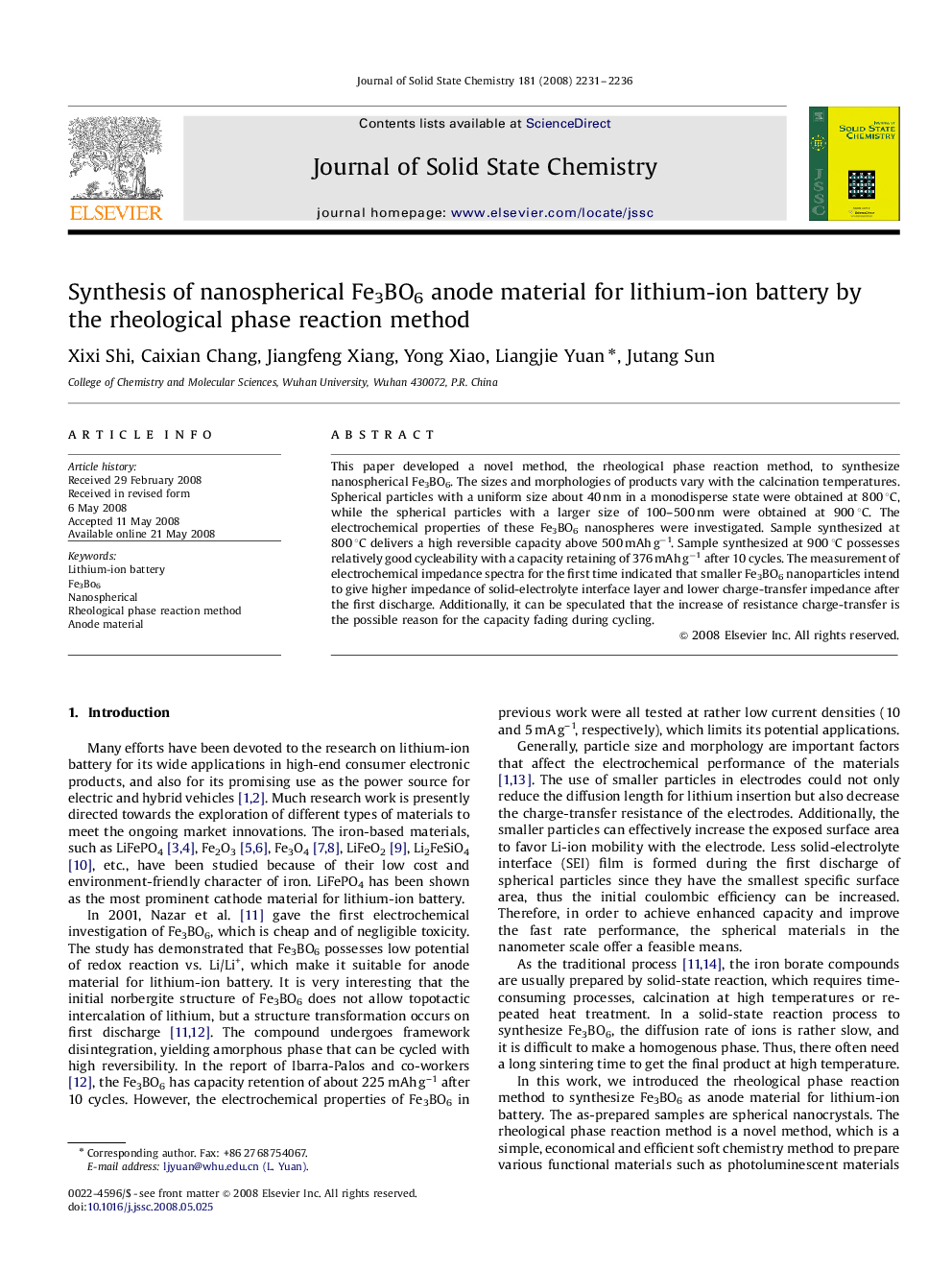| Article ID | Journal | Published Year | Pages | File Type |
|---|---|---|---|---|
| 1332714 | Journal of Solid State Chemistry | 2008 | 6 Pages |
This paper developed a novel method, the rheological phase reaction method, to synthesize nanospherical Fe3BO6. The sizes and morphologies of products vary with the calcination temperatures. Spherical particles with a uniform size about 40 nm in a monodisperse state were obtained at 800 °C, while the spherical particles with a larger size of 100–500 nm were obtained at 900 °C. The electrochemical properties of these Fe3BO6 nanospheres were investigated. Sample synthesized at 800 °C delivers a high reversible capacity above 500 mAh g−1. Sample synthesized at 900 °C possesses relatively good cycleability with a capacity retaining of 376 mAh g−1 after 10 cycles. The measurement of electrochemical impedance spectra for the first time indicated that smaller Fe3BO6 nanoparticles intend to give higher impedance of solid-electrolyte interface layer and lower charge-transfer impedance after the first discharge. Additionally, it can be speculated that the increase of resistance charge-transfer is the possible reason for the capacity fading during cycling.
Graphical abstractNanospherical Fe3BO6 anode material for lithium-ion battery has been synthesized by the rheological phase reaction method. The electrochemical properties of these Fe3BO6 nanospheres show that sample synthesized at 800 °C delivers a high reversible capacity above 500 mAh g–1, and sample synthesized at 900 °C possesses relatively good cycleability with a capacity retaining of 376 mAh g−1 after 10 cycles.Figure optionsDownload full-size imageDownload as PowerPoint slide
